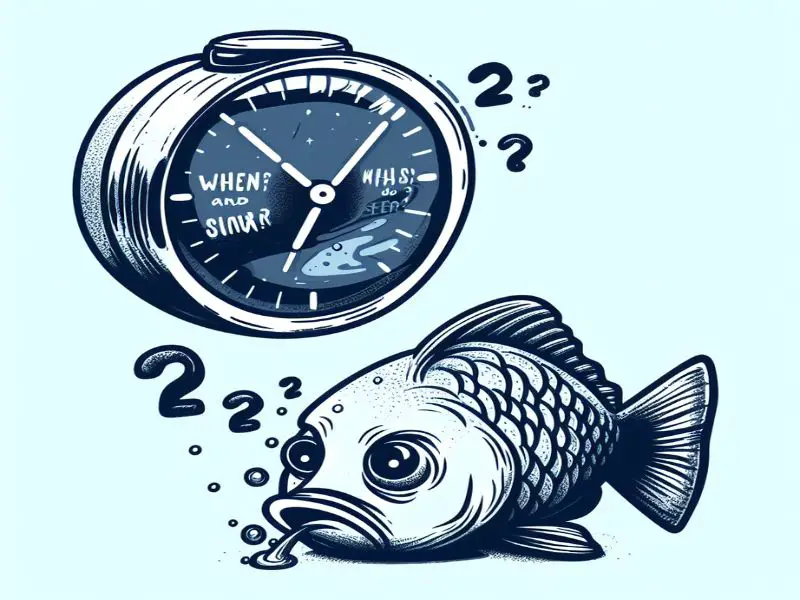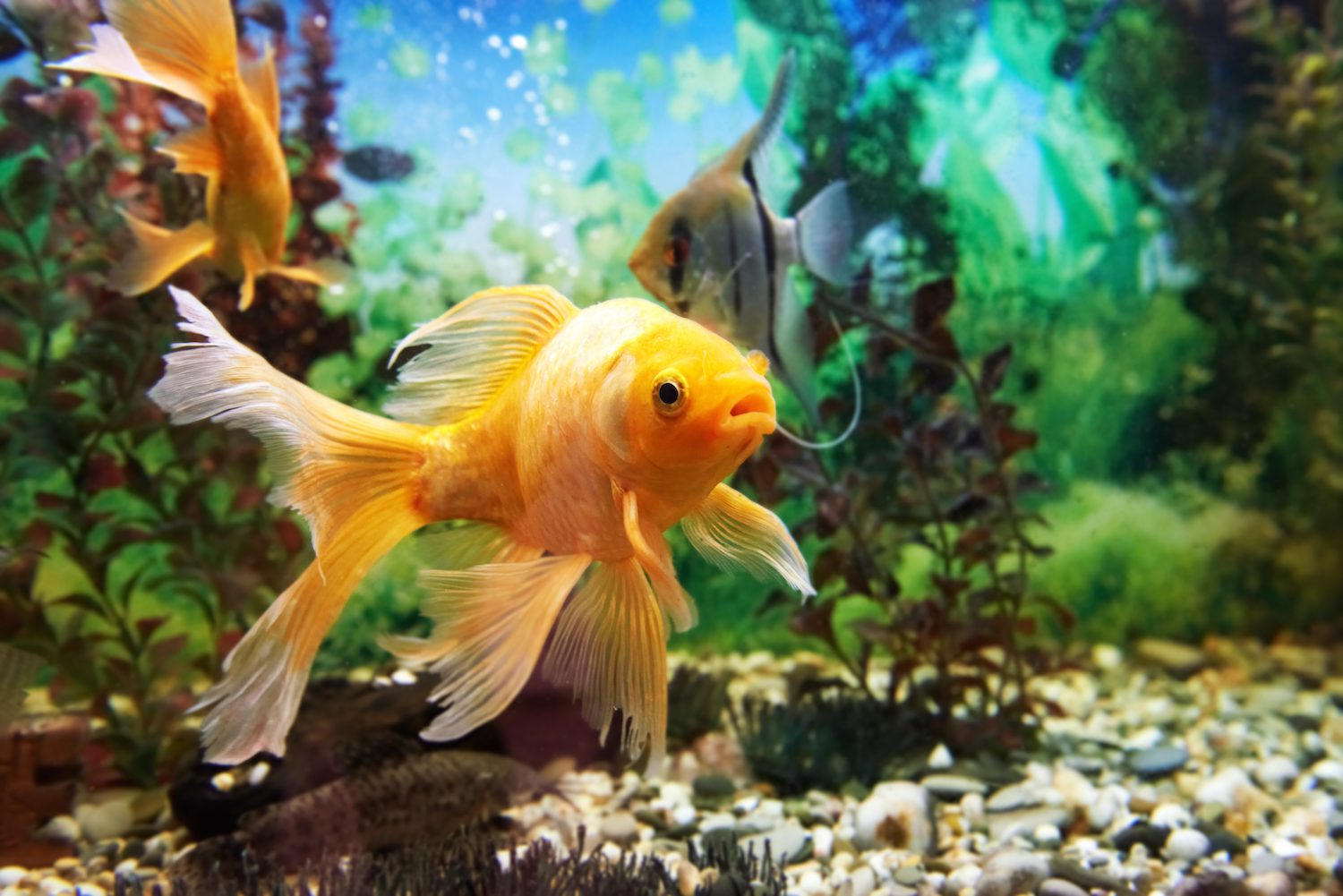Do fish actually sleep? This question has long confounded scientists and aquarium hobbyists alike. While fish don’t sleep in quite the same way humans do, mounting research indicates they do experience various inactive restful states that preserve energy and allow their bodies to heal.
This article explores the current scientific understanding of sleep patterns and stages in fish. We’ll examine how factors like habitat and schooling behaviours influence resting behaviours. You may be surprised to learn some fish sleep with their eyes open or take micro-naps that last just a few seconds!
Understanding the science behind fish sleep reveals important insights into their health, natural behaviours, and evolutionary adaptations.
Decoding the Sleep Cycles of Fish
Research reveals that fish experience restful inactive states similar to sleep, just in different patterns. By tracking brainwaves and eye movements, distinct sleep phases have been identified – including slow-wave and rapid eye movement (REM).
Slow-wave sleep allows tissue growth and repair with reduced metabolism. REM brings heightened fin and gill motions, suggesting dreaming. Fascinatingly, transitions between cycles may occur in mere seconds for some species and hours for others.
Schooling fish like tuna show less prolonged deep sleep needing to stay alert. Bottom-dwellers like eels display longer sleep states while buried camouflaged.
Mapping varied sleep cycles gives insight into how fish restore body and mind, conserve energy, avoid predators, and thrive. Understanding species-specific sleep patterns informs fish health and biology.
Factors Influencing Fish Sleep
A fish’s environment and tank conditions significantly sway the quality and quantity of its sleep. Location plays a key role – positioning a tank away from noisy high-traffic areas allows undisturbed sleep.
Soft lighting is also essential, as bright illumination can suppress melatonin production and negatively impact sleep cycles. Using floating or overhanging plants to provide shaded areas supports normal day-night rhythms.
Finally, some species require proper hiding spots, like cave decorations or buried substrate, to feel secure enough to initiate restful sleep states.
By carefully considering tank placement, ambient sounds, lighting schedules, and habitat structures, aquarists can gain a better understanding and control over species-specific sleep needs.
Meeting these basic environmental and behavioural requirements through a customized, fish-centric approach is key to maintaining vigorous fish and aquarium health.
With conscientious attention to influencing elements, one can fine-tune conditions that promote quality and undisturbed rest during a fish’s inactive phases.
Unveiling the Mystery: Do Fish Have a Circadian Rhythm?
Scientists have debated whether aquatic life forms experience biologically ingrained circadian rhythms like land species for years.
However, emerging research indicates fish possess an internal “body clock” guiding natural cycles of activity and rest. Tracking experiments reveal fish sleep patterns follow consistent daily schedules tied to light exposure and nutrient availability in native habitats.
Peculiar sleep-wake times in aquarium settings also suggest an innate sense of time. Much like humans, the master clock in a fish’s brain responds to light signals by directing hormone fluctuations that cue feelings of sleepiness or alertness.
Their body prepares for rest by lowering body temperature, pulse rate, and metabolism in patterns attuned to an approximately 24-hour cycle – even persisting in total darkness. Though slightly mysterious in its operation, this timekeeping system is an evolutionary adaptation to customize functions and behaviours to advantageous times of day or night.
So, while fish may not punch a clock, their movements reveal a reliable biological ticker adapted over aeons and integral to their fundamental well-being.
Swimming in Slumber: How Fish Sleep While Remaining Active
One of the most mystifying discoveries in ichthyology is the existence of sleep swimming – the ability of certain fish to rest while still moving.
At first glimpse, it appears the fish are awake, yet closer inspection reveals a sleeping state. Sleep swimmers exhibit reduced fin coordination, slowed motion, decreased reaction times, and limited awareness of surroundings.
Often, only one brain hemisphere sleeps at a time – analogous to marine mammals that bypass full sleep for half-sleep. This unilateral slow-wave sleep may allow rest alongside vigilance against oceanic threats.
Sleep swimming provides a reprieve from perpetually dynamic environments requiring breathing movement. Species like sharks and tuna swim to ram ventilate their gills, precluding true stillness. Through the remarkable adaptation of sleep swimming, pelagic fish can balance the physiological necessities of activity and inactivity, securing survival and revival.
This special skill illuminates the incredible extent aquatic life will evolve to thrive, challenging assumptions that sleep mandates strict cessation of motion. In ocean dwellers, the boundaries of repose remarkably bend and flow.
When and Why Do Fish Sleep?

On the surface, fish sleep patterns may seem erratic – some species snoozing nightly, others grabbing infrequent naps. But a closer look reveals strategic circadian timing. Diurnal fish like goldfish rest at night, while nocturnal fish like stonefish sleep by day.
This scheduling likely evolved to avoid vulnerable slumber during feeding when predators are most active. Beyond timing, sleep also serves restorative biological functions. During sleep, metabolic and cell repair processes accelerate to rejuvenate the mind and body.
Deep, peaceful sleep additionally supports growth and maturation in juveniles. Without adequate sleep duration and quality, fish experience compromised development, immunity, stress response, and cognition.
Like humans, sleep provides essential aquatic life downtime for calibrating circadian rhythms, consolidating memories, and regenerating from exertion – preserving optimal health and performance.
Tracking preferences in sleep timing and phases reveals the evolutionary fitness value of this quiescent state. For fish inhabiting risky, changeable environments, the life-sustaining role of sleep cannot be underestimated, warranting further illumination.
Guardians of the Night: Do Fish Suffer From Sleep Disorders?
Humans are all too familiar with debilitating sleep troubles like insomnia and sleep apnea. But can fish also suffer from dysfunctional sleep? Research suggests aquatic species experience comparable disturbances.
Stress and unsuitable environments frequently inhibit sleep onset or continuity. Zebrafish models display insomnia-like symptoms when exposed to disruptive noises, lighting, or chemicals – taking longer to fall asleep and waking more frequently.
Captive fish often display erratic floating postures signaling impaired sleep quality. Parasitic infections also haunt slumber by suppressing melatonin and energy stores. And while fish can’t report dreams, irregular REM patterns may signify disturbances.
Fish share the vital need for high-quality sleep to restore metabolic processes and neural functioning. Without addressing factors impairing vigorous shut-eye, aquatic creatures face comparable long-term threats, including cardiac conditions, metabolic imbalance, mental fog, and compromised immunity.
As veterinarians diagnose canine sleep disorders, increased awareness of insomnia and sleep disruption in fish can improve aquarium husbandry, health outcomes, and ethical oversight for these unique animals.
Where Do Fish Sleep Joke
Where do fish sleep? On the river bed!
This joke may be short, but it’s sure to get a chuckle out of anyone who hears it.
After all, it playfully pokes fun at one of the most common questions people have about fish.
Sure, you could look up the answer to this question online or in a book. But where’s the fun in that?
With this joke, you can not only get a laugh out of your friends and family, but also learn something new in the process.

Credit: www.sleepfoundation.org
Do Fish Sleep on the Bottom?
It’s a common misconception that fish sleep on the bottom of the tank or pond. In reality, most fish are able to sleep while suspended in water. This is because they don’t need to breathe air while they sleep and can get all the oxygen they need from the water.
There are some exceptions, however. Some fish do need to rest on the bottom or on a solid surface in order to sleep. This includes species like catfish and loaches, which have breathing organs called barbels that need to be in contact with oxygen-rich air in order to function properly.
If you observe your fish at night, you may notice them floating more lethargically near the surface or resting on plant leaves or other objects in the tank. This is their way of getting some shut-eye!
How Do Fish Not Sink When They Sleep?
When fish sleep, they often float near the water’s surface or sink very slowly. This is because most fish have a swim bladder, which is an air-filled sac that helps them to control their buoyancy. The swim bladder is connected to the esophagus, so the fish can breathe air and adjust its buoyancy as needed.
When a fish wants to sleep, it stops swimming and lets the water support its body weight. This means that less energy is needed to keep the fish afloat, and it can relax and rest.
Do Fish Have Beds?
No, fish do not have beds. Fish are aquatic creatures that live in water. They don’t need beds because they don’t sleep in the same way that humans do.
Humans sleep by lying down on a surface and closing their eyes for some time. Fish, on the other hand, sleep with their eyes open and floating vertically in the water.
How Do Fish Sleep?
Conclusion
As it turns out, fish sleep in various ways, depending on the species. Some fish sink to the bottom of the ocean and rest there. Others will find a safe hiding place, such as among rocks or coral.
Still, others will lie on their side at the bottom of the water.

Tony is a professional fishing instructor, and his hobby is fishing! He has been fishing for the last four years, and he loves the fishing instructor profession. Based on his experiences with different types of fishing, he shares his opinion about various fishing techniques so that a beginner can get started right away. Find him on Twitter. Happy reading!

